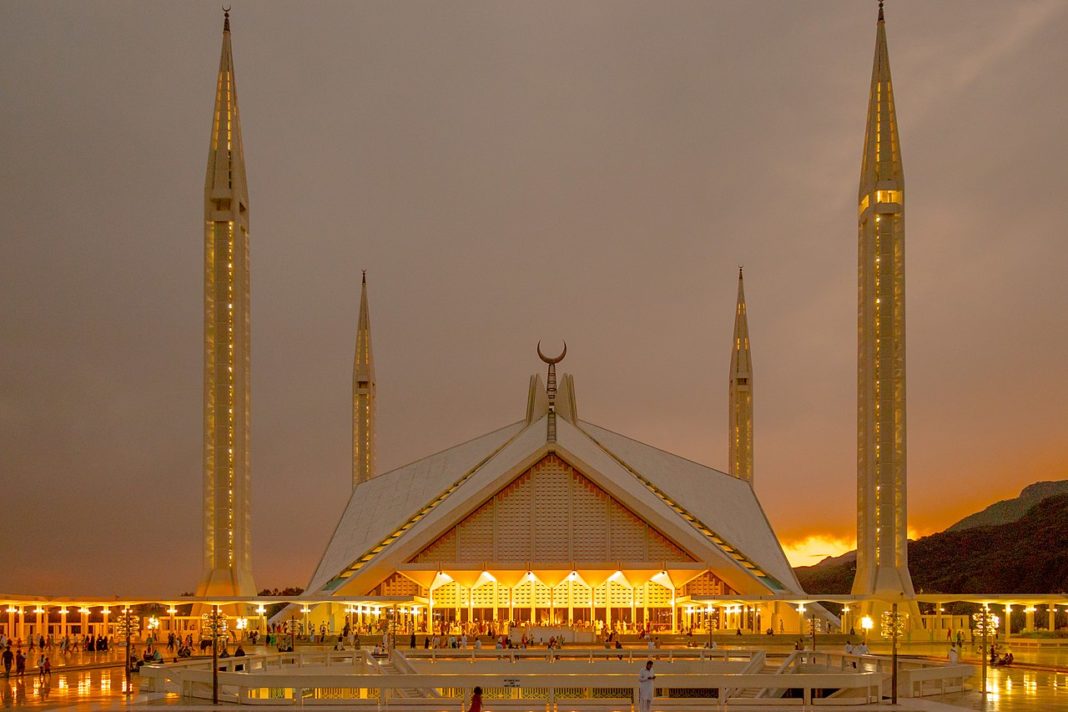The Faisal Mosque is the national mosque of Pakistan, located in the capital Islamabad. It is the seventh-largest mosque in the world and the largest in South Asia, located on the foothills of Margalla Hills in Pakistan’s capital city of Islamabad. The mosque features a contemporary design consisting of eight sides of the concrete shell and is inspired by the design of a typical Bedouin tent.
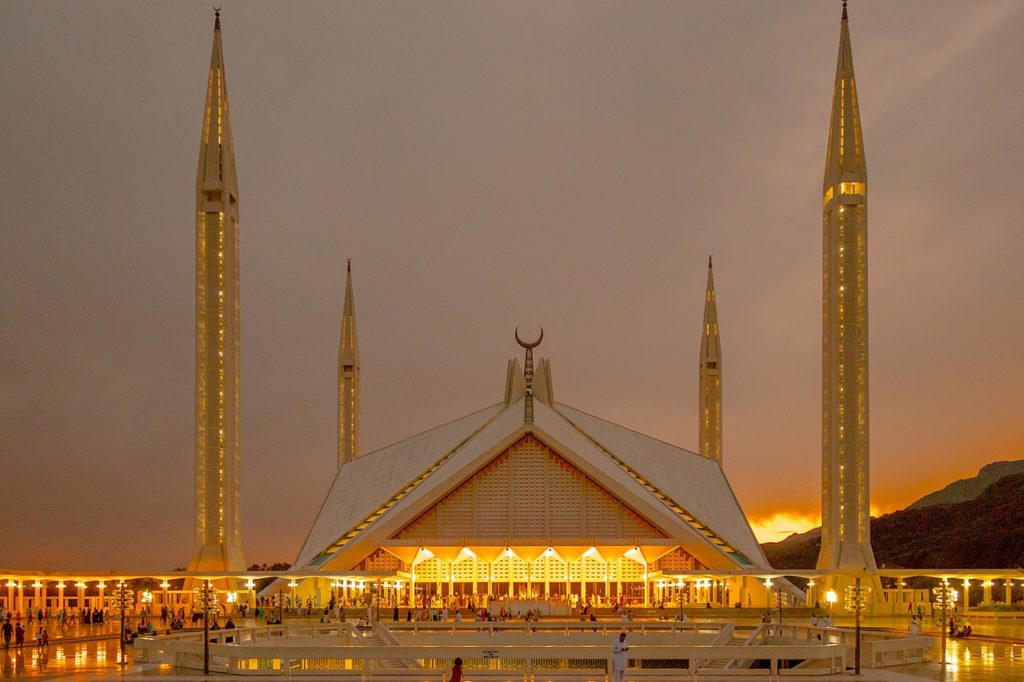
Construction of the mosque began in 1976 after a $28 million grant from Saudi King Faisal, whose name the mosque bears. The unconventional design by Turkish architect Vedat Dalokay was selected after an international competition. Without a typical dome, the mosque is shaped like a Bedouin tent, surrounded by four 79 m tall minarets. The design features eight-sided shell-shaped sloping roofs forming a triangular worship hall that can hold 10,000 worshippers.
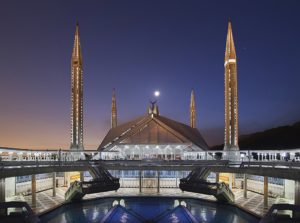
Combined the structure covering an area of 130,000 m2, the mosque dominates the landscape of Islamabad. It is situated at the north end of Faisal Avenue, putting it at the northernmost end of the city and at the foot of Margalla Hills, the westernmost foothills of the Himalayas. It is located on an elevated area of land against a picturesque backdrop of the national park. Faisal Mosque was the largest mosque in the world from 1986 until 1993 when it was overtaken by the mosques in Saudi Arabia.
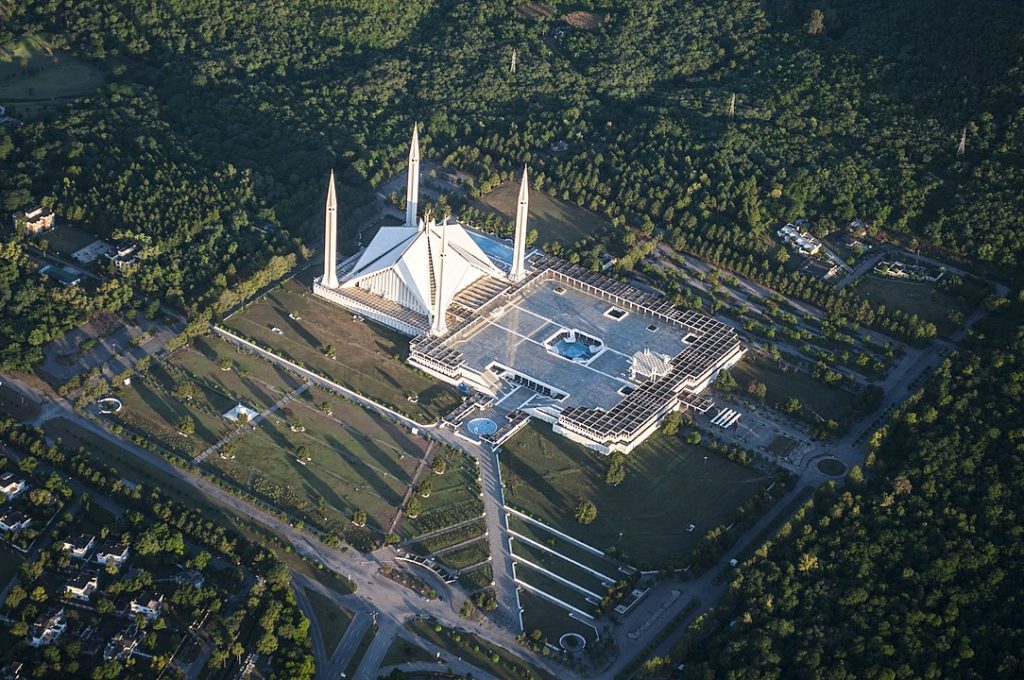
Instead of using traditional domes, Vedat Dalokay designed an eight-sided main hall that looked like an Arab’s Bedouin desert tent. Additionally, he added four minarets on all four corners of the main hall, which are of 80 m high, the tallest minarets in South Asia. The main structure of the building is the main prayer hall, which is supported by four concrete girders. The four unusual minarets are inspired by Turkish architecture. Vedat Dalokay also believed that the design of the Masjid represents Kaaba in an abstract manner. Entrance is from the east, where the prayer hall is fronted by a courtyard with porticoes.
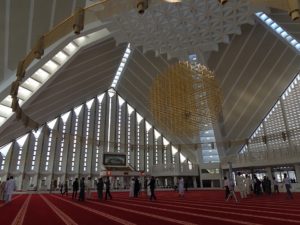
The International Islamic University was housed under the main courtyard but now has relocated to a new campus. The mosque still houses a library, lecture hall, museum, and cafe. The interior of the main tent-shaped hall is covered in white marble and decorated with mosaics and calligraphy by the famous Pakistani artist Sadequain, and a Turkish-style chandelier. The mosaic pattern adorns the west wall and has the Kalimah written in early Kufic script, repeated in a mirror image pattern.
Today, the mosque has become a cross-cultural symbol and represents a sacred symbol of Pakistani culture. Many people believe that the mosque represents the hopes and aspirations of the country’s people; therefore, it has become a national symbol of Pakistan. Due to its popularity throughout the world, it has become a major tourist attraction and an influential piece of Islamic architecture.
According to Wikipedia





